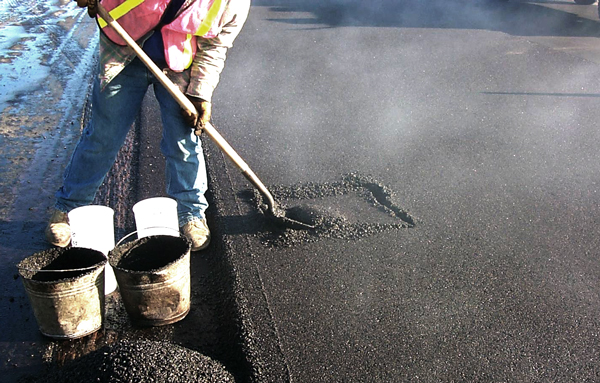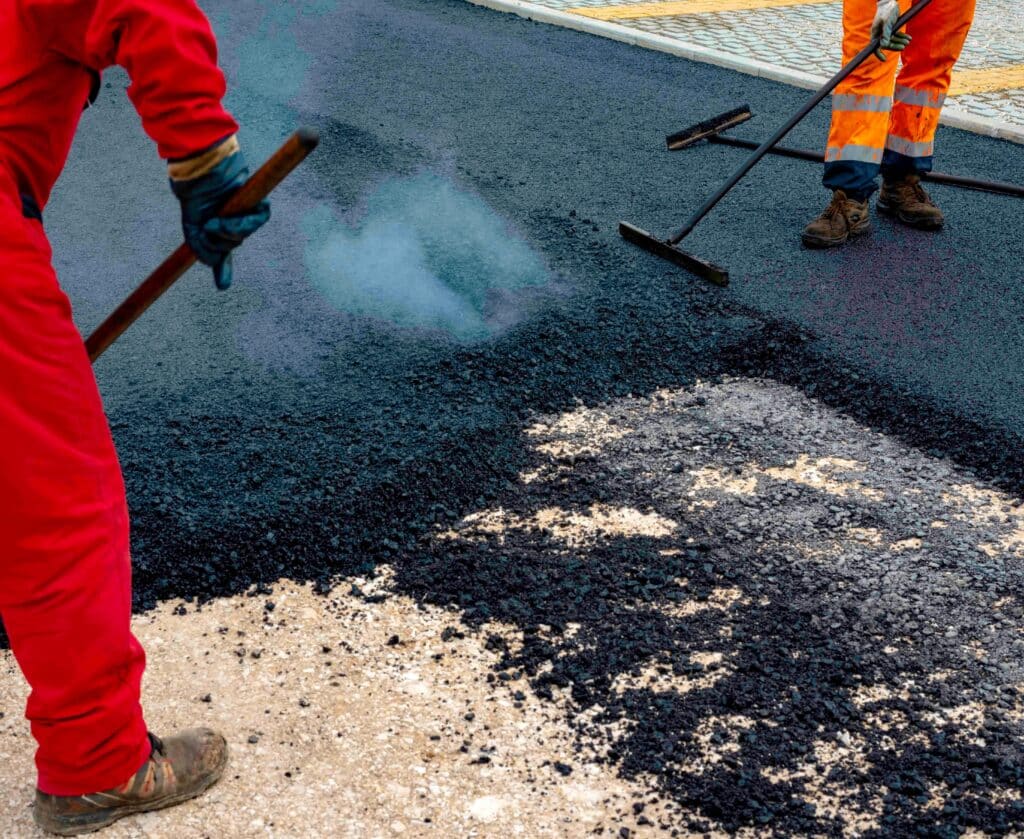Change Your Residential property's Landscape with Hot Mix Asphalt Paving Excellence
Change Your Residential property's Landscape with Hot Mix Asphalt Paving Excellence
Blog Article
Opening the Keys of Warm Mix Asphalt Technology
Exploring the depths of warm mix asphalt technology uncovers a globe where precise processes and precise solutions converge to shape our roads and infrastructure. The blend of aggregates, fillers, and binders isn't just a building and construction job yet a critical orchestration of resilience and effectiveness. As we peer into the complex dance of components, a tapestry of resilience and sustainability unravels. Yet what lies below this surface of asphaltic mastery, and what keys wait to be introduced in the world of paving innovations?
Importance of Hot Mix Asphalt
Warm Mix Asphalt plays a crucial function in modern-day framework growth due to its resilience and cost-effectiveness. As the most frequently utilized leading product for roads, highways, and car parking great deals, Hot Mix Asphalt provides a variety of benefits that contribute to its significance in building projects.
The toughness of Warm Mix Asphalt originates from its make-up, which consists of accumulations, binder, and filler materials that are thoroughly chosen and mixed to meet specific performance needs. This specific mix leads to a flexible and solid sidewalk that can withstand constant usage without considerable deterioration. Warm Mix Asphalt is 100% recyclable, further enhancing its sustainability and ecological advantages. Generally, the significance of Hot Mix Asphalt in facilities development can not be understated, as it remains to be a keystone of modern construction techniques.
Elements of Asphalt Mixes
The structure of asphalt blends consists of thoroughly chosen accumulations, binder, and filler products that are critical for achieving certain efficiency demands. Accumulations are the main element of asphalt blends, giving toughness and security. The binder, normally asphalt or asphalt concrete, holds the aggregates together and supplies flexibility and longevity to the mix.
The mix and proportion of these parts play a considerable role in determining the quality and efficiency of the asphalt mix. Designers thoroughly make the mix to fulfill certain needs, thinking about variables like web traffic quantity, environment problems, and pavement life-span. Proper selection and balancing of accumulations, binder, and fillers are necessary for creating sturdy, resilient asphalt pavements.
Combining and Manufacturing Techniques

When the accumulations are chosen, the binder, usually asphalt cement, is included in bind the materials together. The binder's quality and amount significantly affect the mix's toughness, versatility, and resistance to ecological elements. Furthermore, fillers like moisturized lime or Portland concrete might be included to enhance details attributes of the asphalt mix, such as its workability or wetness resistance.
Throughout pop over to this site production, the aggregates and binder are heated, generally between 250-325 ° F(121-163 ° C ), to assist in mixing and ensure correct coating of the accumulations. The mixing procedure must be complete to achieve an uniform combination that promotes the wanted efficiency characteristics of the asphalt. Different strategies, such as batch mixing or drum blending, are used to achieve high-quality and regular asphalt blends for building jobs.
Factors Impacting Asphalt Performance
Factors influencing asphalt performance include a variety of variables that influence the resilience, durability, and general quality of asphalt pavements. One essential variable is the high quality of products made use of in the asphalt mix.

Ecological conditions additionally affect asphalt performance. Temperature level variations, dampness seepage, and website traffic loads can all affect the structural stability of the pavement. Design considerations, such as pavement density and water drainage, are crucial in ensuring the long-lasting performance of the asphalt pavement. By meticulously thinking about these aspects, designers and specialists can enhance asphalt performance and boost the service life of pavements.
Lasting Practices in Asphalt Innovation

In addition, the growth of warm-mix asphalt (WMA) technologies has gained traction in the last few years. WMA enables the manufacturing and positioning of asphalt blends at lower temperature levels contrasted to typical hot-mix asphalt, resulting in lowered energy usage and greenhouse gas emissions. Additionally, the usage of permeable asphalt mixes can assist minimize stormwater runoff problems by permitting water to penetrate via the sidewalk and right into the ground, promoting all-natural water filtering and recharge processes. By applying these lasting techniques, the asphalt sector can add to developing a more eco friendly and durable infrastructure network.
Verdict
In verdict, warm mix description asphalt technology plays a crucial role in modern infrastructure growth as a result of its toughness and cost-effectiveness. By very carefully stabilizing parts, using correct mixing strategies, and taking into consideration different aspects, engineers can produce high-grade asphalt mixes that stand up to heavy traffic loads and severe weather. Accepting sustainable practices, such as using warm-mix technologies and recycled materials, better improves the ecological friendliness of asphalt technology.
Blending and production techniques in warm mix asphalt technology include the specific combination and handling of accumulations, binder, and fillers to develop a high-performance and resilient asphalt mix.Variables affecting asphalt efficiency incorporate an array of variables that affect the sturdiness, long life, and overall top quality of asphalt pavements. Sustainable techniques in asphalt innovation include various initiatives aimed at decreasing the ecological influence of asphalt production and paving procedures. By integrating redeemed asphalt sidewalk (RAP) and recycled asphalt tiles (RAS) right into brand-new asphalt blends, the industry can substantially reduce the intake of raw products and power, while additionally decreasing garbage dump waste.
WMA allows for the manufacturing and positioning of asphalt mixes at lower temperatures contrasted to standard hot-mix asphalt, resulting in lowered power consumption and greenhouse gas exhausts.
Report this page